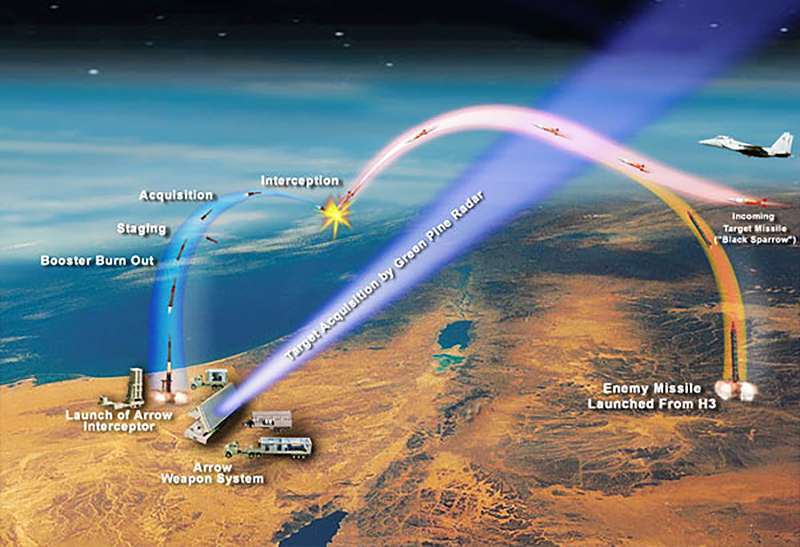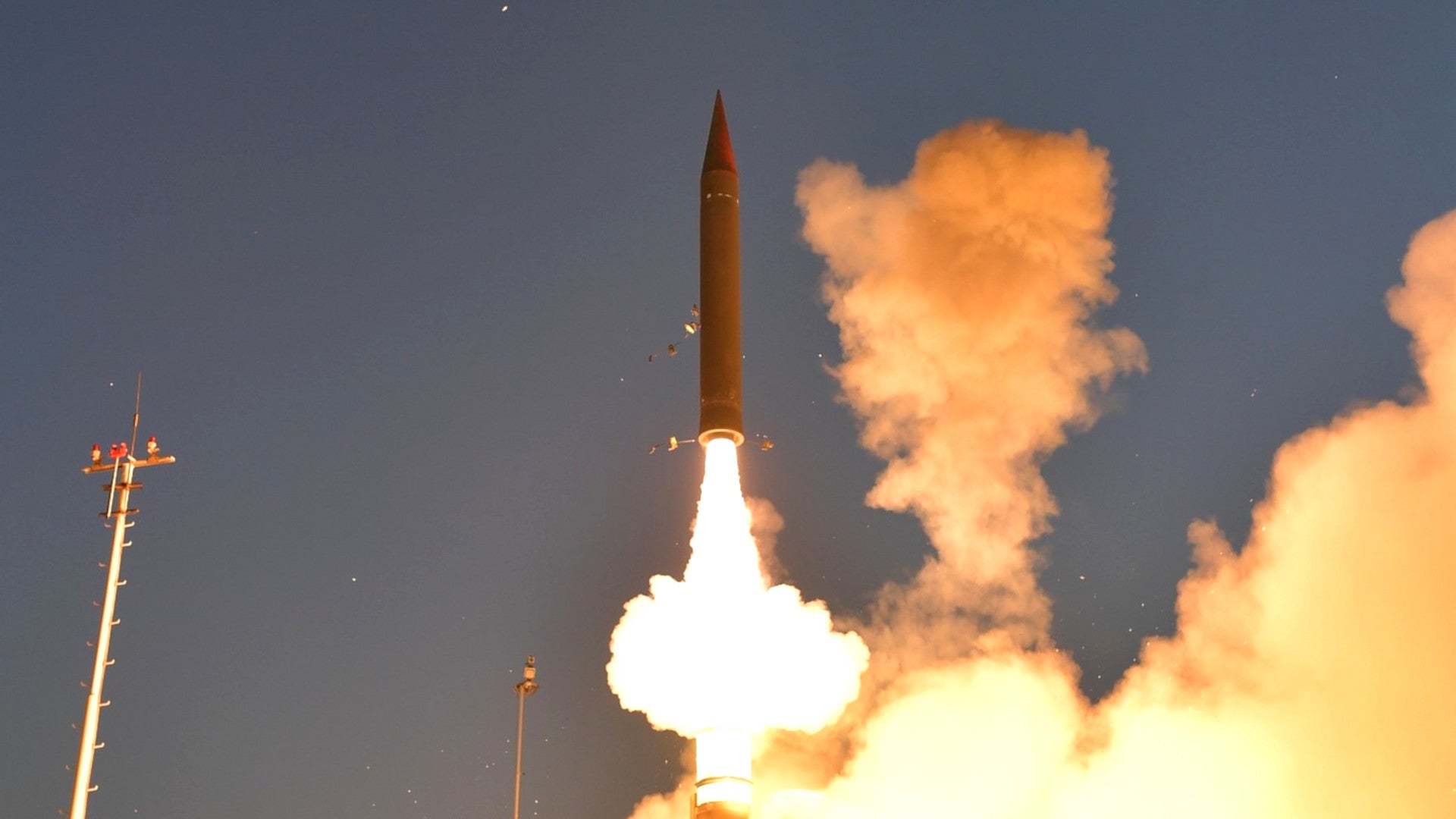Israel, in cooperation with the United States, has conducted a new test of its Arrow 3 ballistic missile defense system. Though both countries said this was a long-planned event, it is hard not to see it, at least in part, as a signal to Iran, which Israeli authorities blamed for a recent rocket launch at their territory from Syria. The Iranians also failed to put a satellite into orbit earlier in January 2019, a launch the U.S. and Israeli governments condemned as a cover for the development of long-range ballistic missiles.
The Israel Missile Defense Organization (IMDO), together with the U.S. Missile Defense Agency (MDA), launched the Arrow 3 from Palmachim Air Base in Central Israel against a mock ballistic missile on Jan. 22, 2019. The Israeli Air Force (IAF) and the missile defense system’s manufacturer Israel Aerospace Industries (IAI) were also involved in the test.
“The success of this test presents an important milestone in the operational capabilities of the State of Israel in defending itself against current and future existential threats,” Israel’s Defense said in a statement.
“This successful test provides confidence in Israel’s capability to protect itself from existing threats in the region.” U.S. Air Force General Samuel Greaves, the present director of MDA, said in another press release. “We are committed to assisting the government of Israel in upgrading its national missile defense capability against emerging threats.”

Arrow 3 represents the uppermost tier of Israel’s layered missile defenses and can reportedly engage any type of ballistic missile, including higher- and faster-flying intercontinental ballistic missiles (ICBM). The interceptor carries a kinetic kill vehicle that is supposed to physically smash into an incoming threat above the earth’s atmosphere, thereby destroying it before it can pose a danger to anyone on the ground.
The complete system uses the Green Pine family of active electronically scanned array (AESA) radars to spot and track threats. The U.S. military also operates an AN/TPY-2 missile defense radar in Israel and information from that sensor almost certainly feeds into Israel’s own missile defense network. It’s rumored that the United States also feeds relevant information to Israel from other sensors, including the Space-Based Infrared System (SBIRS) early warning satellites.

The interceptor builds on the experience of the previous Arrow 2, which is not capable of exoatmospheric intercepts. Israel has also received significant funding and other assistance from the United States to develop the Arrow series since the 1980s. American firm Boeing has been directly involved with the work on the Arrow 3.
Arrow 3 entered operational service in January 2017 and the system shot down a Syrian surface-to-air missile some three months later. The Israelis have continued to refine and test the system since then.

IMDO and MDA were supposed to fire another Arrow 3 from the Pacific Spaceport Complex-Alaska (PCSA) on Kodiak Island in Alaska in 2018, but that test got postponed in order to “improve the system’s readiness,” according to the Israeli Ministry of Defense. Additional tests in 2016 and 2017 got called off due to technical issues, as well.
Missile defense is complicated in general and exoatmospheric intercepts are especially challenging. You can read all about the challenging process in this past piece of ours. So, it’s not surprising that Israel is continuing to refine and improve on Arrow 3 even though it has already entered service. There is also a need to test how the interceptors perform against different types of targets under various parameters using certain combinations of targeting data.
But intentional or not, this latest Arrow 3 test certainly takes on an added emphasis given a recent spike in tensions between Israel and Iran, especially over the latter’s forces and their proxies in Syria. Two days before the test launch, Iranian or Iranian-backed forces in Syria fired what Israeli authorities have simply described as a “rocket” into Israel.
Whatever it was specifically, this threat didn’t require the use of the Arrow three’s capabilities, though. Israel’s Iron Dome defense system, the lowest tier in its missile defense shield, focused mainly on shooting down artillery rockets and shells, successfully intercepted that threat.
However, in the past, Syrian dictator Bashar Al Assad had threatened to fire his own ballistic missiles at Israel in retaliation for continued strikes against Iranian and Iranian-supported interests in his country. Israeli forces regularly target Syria’s air defenses while carrying out those operations and have targeted Syrian forces
more directly in retaliation for other provocations.
The Arrow 3 test also comes amid a spike in charged rhetoric between Israel, along with the United States, and Iran, over the latter’s ballistic missile development programs and possible work on a nuclear weapon. Earlier in January 2019, Iran fired a Simorgh space launch vehicle in a failed attempt to place a satellite into orbit. U.S. and Israeli authorities, among others, contend these space launches are just a way to skirt U.N. Security Council resolutions aimed at halting Iranian long-range missile programs.
The U.S. military’s latest Missile Defense Review, which the Pentagon released on Jan. 17, 2019, also highlighted the growing threat from Iran’s missiles, noting that it “has the largest ballistic missile force in the Middle East.” It also claimed that the Iranians continue to pursue ICBMs, including through work on their nascent space program, that could be capable of threatening the United States.

“The United States will sustain its strong missile defense partnership with Israel, underpinned by a new U.S.-Israel Memorandum of Understanding (MOU) that includes a commitment of $500 million for Israeli missile defense each year beginning in Fiscal Year (FY) 2019 through FY 2028,” the report announced, as well. “Under this MOU, DoD will sustain extensive cooperation with Israel, and seek increased opportunities to take advantage of Israeli research and development efforts for similar U.S. defense missions.”
This plan includes continued co-development and co-production of both the Arrow 3 and David’s Sling, the latter of which uses the Stunner interceptor and sits capability-wise between the Arrow family and Iron Dome. The U.S. and Israel will still co-produce the Iron Dome system, as well, which the U.S. Army is now looking to buy for its own use. The report did not mention it specifically as part of the new agreement, but Israel is also a major operator of the U.S.-made Patriot surface-to-air missile system, which has a missile defense role, as well.

All told, this latest Arrow 3 test is an indicator that ongoing cooperation, which is predominantly focused on countering Iranian capabilities, as well as those that it has and continues to proliferate to proxies in the region, such as Lebanon’s Hezbollah. The increasing use of Iron Dome and other missile defense systems to protect against missiles and rockets originating from Syria only further underscores that reality of the threat.
Those strikes will only further push Israel to keep working on the various layers of its ballistic missile defense shield. Combined with the overall tensions with Iran, and with an apparent backlog of test launches building up, we could easily see more demonstrations of the Arrow 3’s capability as the year goes on.
Contact the author: joe@thedrive.com
